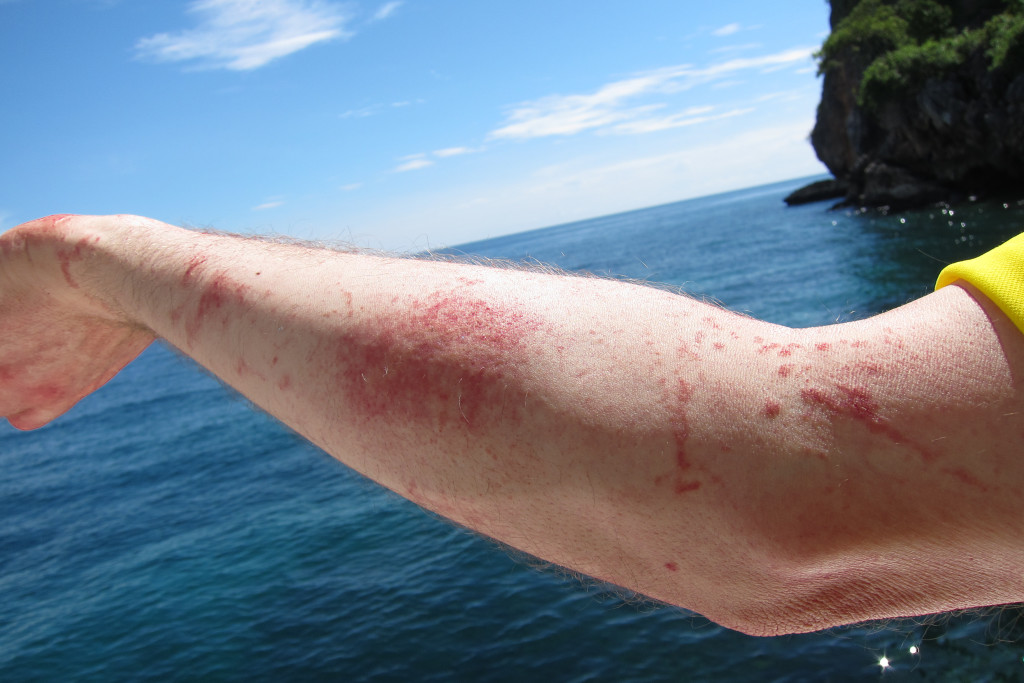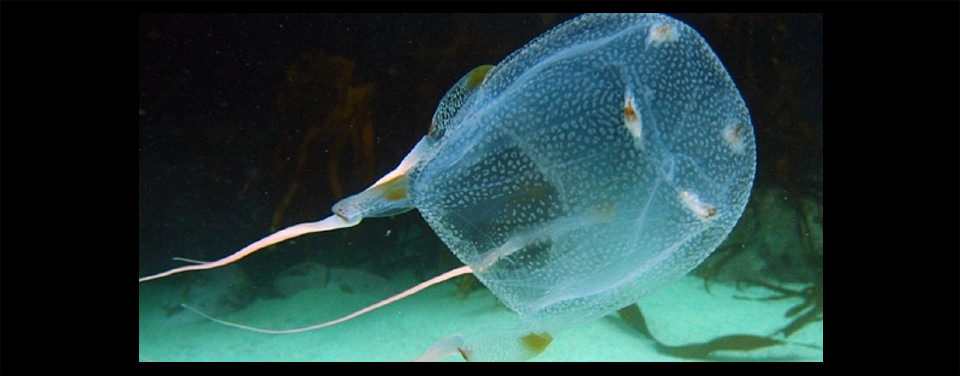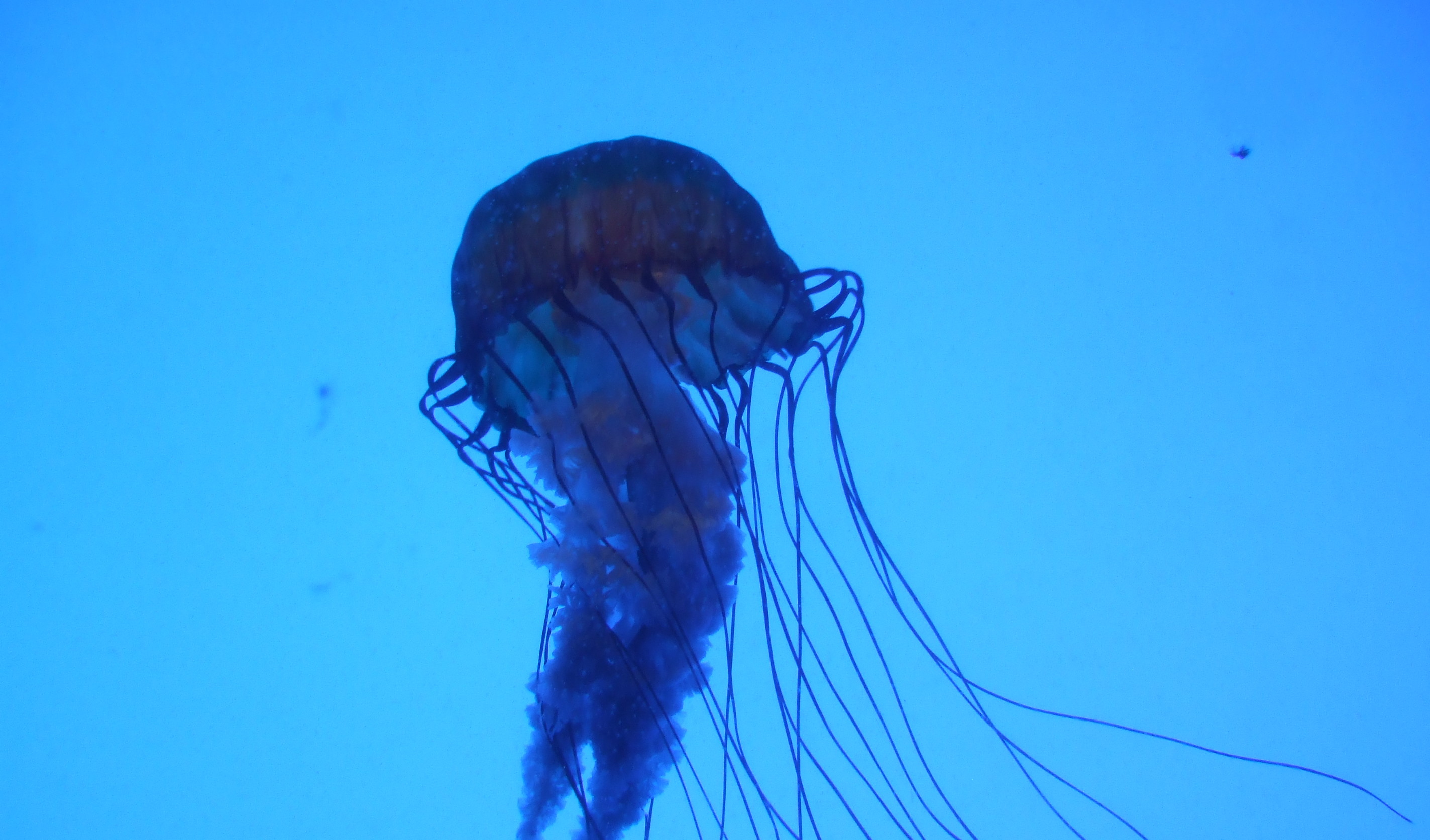Box Jellyfish in Hawaii are one of the important sea creatures you should know about before you visit.
When you dream of your Hawaii vacation, you likely envision endless days floating peacefully in the Pacific Ocean – and you’ll likely get to enjoy some of that blissful relaxation while you’re here.
But, of course, the ocean has dangers. One of which is the villainous Box Jellyfish. These square-shaped invertebrates inflict powerful stings on unsuspecting swimmers. And while their toxins aren’t typically lethal, they’re incredibly painful.
So, before you hit the water, here are five things to know about Box Jellyfish in Hawaii.
Box Jellyfish Stings Hurt
Though they pack a less potent punch than box jellies in other parts of the world, Hawaii’s three species of Box Jellyfish can still deliver a painful and serious sting. Like their relative, the Portuguese man-o’-war, Box Jellies’ tentacles are lined with stinging cells that capture prey. Each cell fires a toxin-dosed barb that can penetrate the skin, which causes the singing sensation.
How to Treat a Box Jellyfish Hawaii Sting
If you DO get stung by a Box Jellyfish, there are things you can do to mitigate the pain. Experts recommend rinsing the area with salt water before pouring vinegar on the sting to deactivate any of the remaining toxins. Don’t pour freshwater or put sand on it – this could further irritate live cells and cause inactivated barbs to dig in.
Lifeguards posted on many Hawaii beaches will have vinegar or a similar remedy on hand.
Avoid touching the area before being treated, as the cells can be transferred, and all parts of the jellyfish, including the bell, can potentially sting.
Remove any tentacles or jellyfish parts with a stick or other object. Ice packs usually help reduce inflammation following a vinegar treatment.
It may take about an hour for the stinging sensation to subside, and there may be a retained mark on the skin. If you experience a more severe reaction, such as difficulty breathing, problems with vision, cramps, or palpitations, seek emergency medical treatment immediately.

You Can Avoid Box Jellyfish By Timing Your Beach Visit Right
Of course, the best way to avoid box jellyfish stings is to stay out of the water when you see warnings posted. Remember that box jellyfish are present in Hawaii’s waters year-round, so there is no guarantee of avoiding an encounter altogether. But, you can predict when they’ll appear by learning about their mating habits.
Box jellyfish reproduce under certain lunar and tidal conditions. They will mate beyond the reefs for several nights after the full moon, but appear inshore after nighttime high tides recede, leaving them trapped along the beach.
Beachgoers can expect influxes of Hawaii box jellyfish on Oahu’s south-facing beaches about eight to ten days following the full moon.
They May Cause Some Beaches to Close
Each year, officials close Hanauma Bay for a few days because of an unusually large influx of Box Jellyfish in the area. Before recent closures, they counted more than a hundred jellyfish in the waters, and dozens of swimmers got stung. If a beach you’re hoping to visit closes down due to box jellyfish, hang in there – they’ll likely reopen in a few days or less.

The Weather Can Impact Invasions
If Hawaii is experiencing unusually windy conditions, you can expect Box Jellyfish to appear, even in waters usually excluded from any sort of invasion. Many times, they simply “blow in” with the gusty winds. So you may see Box Jellyfish in the oceans, even if it’s not 8 to 12 days after a full moon.
Box Jellyfish in Hawaii: A Warning and Encouragement
You should still plan to spend lots of time at the beach during your time in Hawaii, even if the idea of a jellyfish sting makes you want to stay safe in your hotel room. Just be aware of Box Jellyfish in Hawaii and mindful of their schedule. And, adhere to any posted warnings about the sea creatures.
Otherwise, enjoy the beach (maybe with a spray bottle of vinegar handy!).




